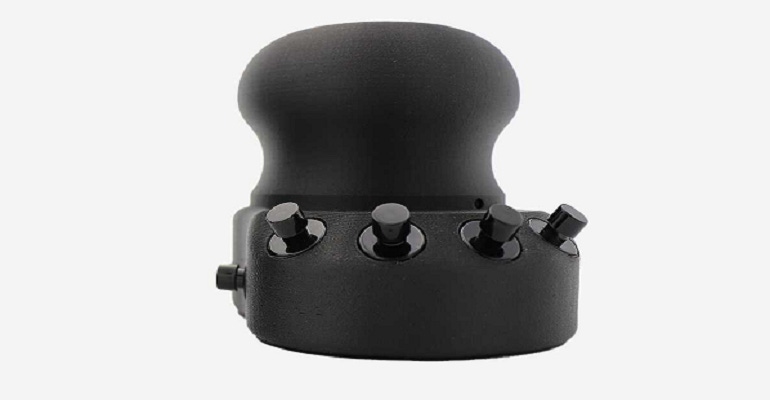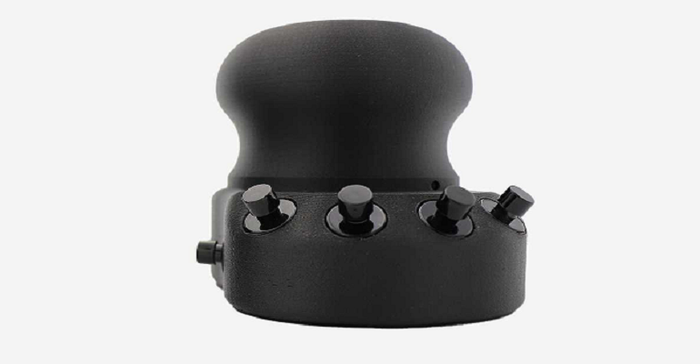Desktop Metal 3D Printers Open New Markets for Additive Manufacturing
Small printers are designed to make additive manufacturing more accessible and ideal for research, prototyping, and small replacement parts.
October 21, 2020

Metal additive manufacturing has seen many trends over recent years. The technology is pushing the (build) envelope and deposition rate to higher levels, broadening the choice of materials, which is opening new markets. One notable trend is the number of product launches for low-cost desktop printers. While the concept is intriguing, it may be some time before small printers prove their market worthiness.
The overall 3D printer industry is forecast to have a fall resulting from COVID-19. Once that’s resolved, the market is expected to rise significantly. IDTechEx reported on the market in its technical market report: Metal Additive Manufacturing 2020-2030.
The report offers a number of insights. The 3D printing for the hobbyist market is popular, but it’s not where the value lies. The research shows that most of the market value is in industrial applications. Metal additive manufacturing currently services high-value industries. Most of the printers sold are powder bed fusion and can cost over $1 million. Add to that the expensive powder feedstocks.

Small Printers Open New Markets
One recent trend detailed in the report is the release of desktop-sized affordable metal printers. These are not systems costing around $500 to $1 million of the first wave of metal printers. They tend to run $100k or below. These small printers are designed to make this technology more accessible. The manufacturers are targeting research, prototyping, and small replacement parts.
The high price-tag for current metal printers has kept it in the realms of high-value industries such as aerospace, defense, and medical. Recently these powder bed fusion processes have gained some traction in sectors, such as energy, but we’re still waiting to see economically viable use-cases.
As 3D printer makers create affordable desktop models, it is prompting interest. “The demand varies widely depending on the material and sector,” Richard Collins, principal technology analyst at IDTechEx, told Design News. “There is, of course, demand for cheaper variants of additive manufacturing, but most of the variants are pushing into new areas and looking to generate demand.” Specifically, that includes R&D and the spare parts market.
New Small Machines Entering the Market
The IDTechEx reports point to numerous players entering this field with different processes. The bound metal approaches of Markforged and Desktop Metal grab most of the headlines, although there are others extruding pellets (rather than filaments) and Rapidia with a water-bound approach. Beyond that, there are players like One Click Metal (a TRUMPF spin-off) making low-cost powder bed fusion machines and Meltio and InssTek making directed energy deposition units that utilize wire and powder feedstocks, respectively. Some companies are producing only these low-cost printers. Others offer them as a secondary project.
Hobbyists tend to prefer the polymer 3D printing machines, but many of those interested in R&D or spare parts need metal machines. “The most likely initial applications for these desktop models will be in R&D – from university through to industry,” said Collins. “There is also a demand for one-off part replacements.”
The smaller machines can’t match the quality of the larger printers, but that might be an issue in R&D or spare parts. “The highest precision is typically seen with the mature powder bed fusion players,” said Collins. “These desktop machines can produce net-shape parts. Whether that is sufficient will depend on the tolerances of the application.”
Adoption Remains a Mystery
While the smaller machines utilize emerging metal materials, the materials market is not yet targeting the needs of small machines. “Most metal innovations for additive manufacturing are being targeted as powders for powder bed fusion or directed energy deposition,” said Collins. “There are innovations showing up for powder for binder jetting, but overall, I would say most material innovations are not orientated towards these desktop variants.”
So, what the adoption will be like? The small printers enter unchartered territory. The report noted that although the products come at an attractive price point, the market potential has many barriers yet. The competitive landscape is heating up, the complicated legal history between Markforged and Desktop Metal is well documented, and given that both have significant funding and valuations, there is confidence in the potential for the small printers. The report also noted that both players have other offerings that could prove lucrative in the longer-term.
Rob Spiegel has covered automation and control for 19 years, 17 of them for Design News. Other topics he has covered include supply chain technology, alternative energy, and cybersecurity. For 10 years, he was the owner and publisher of the food magazine Chile Pepper.
About the Author(s)
You May Also Like





